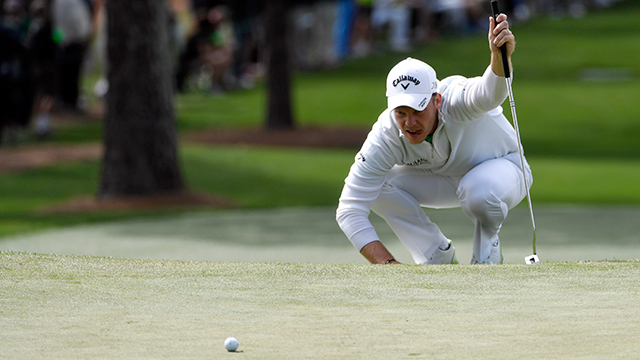NEWS
Two takeaways from Willett's putting routine

You may never win a green jacket like Danny Willett, but you can take away two key elements of what makes him such a precise putter. If you can draw a straight line on a spherical object, you're halfway there. And if you can putt the ball consistently so the line stays true for the first 12 inches, you've mastered the other half.
It seems simple -- and according to PGA Professional Chris Czaja, simplifying the putting stroke is the key to making consistent, correct contact between putter face and golf ball. That's what Willett did to perfection all week at Augusta National, and because he was able to make critical putts, particularly in the closing holes on Sunday, he's the 2016 Masters Champion.
JASON DAY: 'Walk the line' on your putts
"To win at the Masters, you've got to be able to putt -- and putt really well," Czaja said. "And he did that every round, even in the wind."
For Czaja, golf instructor at the Boca West Club in Boca Raton, Fla., it's all about taking away the complex mechanics involved in putting the ball. The more steps you can eliminate, the simpler the process becomes. And the more often you can put a solid stroke on the ball, no matter the difficulty of the shot, the better putter you'll be.
Just like a carpenter uses a T-square to make sure his cuts are the correct angle, Willett did the same thing on the greens. He clearly defined his aim line, pointed it at his intended target and then made a point of getting the sweet spot of his putter to make contact with the ball at a perfect right angle every time.
From that point, all he had to worry about was distance control, because he had taken the complexity out of the stroke.
FIND A PGA PROFESSIONAL NEAR YOU: Search by zip code
"I teach players distance control as a premium," Czaja said. "But also to be a great putter, you have to hit the ball on the correct line. And when you simplify to hitting it squarely on that line, your putting is going to improve. And he was rock solid with the putter."
First, Willett makes sure he can see his aiming line when he's in his address. Most golf balls come imprinted with a sighting line, but Willett added a thicker line with a marking pen -- perfectly legal under the Rules -- so there'd be no doubt as to the line he wanted the ball to travel.
"I think that's great for all golfers to do," Czaja said. "There's a line on the ball you can see, but when you highlight it with a Sharpie to make it even more defined, it can only help you visually to see the correct line and to get the sweet spot of the putter on that same line.
"I think more golfers should do that, instead of just using the line already printed on the ball. It's like using a range ball on the putting green. The range ball has a stripe and you can use that in your practice, but when you play on the course, having a definitive line is the key. And it's a big part of his putting routine."
Willett made sure to get directly behind the ball and crouch down to set the specific aiming point.
"Having that as part of your routine, where you squat down like a catcher behind the golf ball and using the noticable line, that's the key," Czaja said.
Amateurs can fall into the bad habit of trying to change their putting stroke based on the slope of the green, thinking they can help eliminate some of the break. Instead, that leads to a non-repeatable putting stroke and complete guesswork.
Willett does something that helps him square up the putter head to the ball. He picks a spot on the green on a straight line about a foot in front of the ball and tries to roll the ball over that, instead of trying to use the hole as the target.
